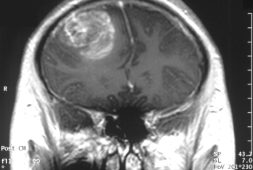2. Avoiding Eye Contact

Individuals with autism spectrum disorder (ASD) frequently struggle with looking others in the eyes. This avoidance has often been seen as a symptom of social and personal disinterest, although evidence from autistic persons suggests otherwise. Many people report that gazing others in the eyes is painful or stressful for them; some even report that “it burns,” pointing to a neurological basis. A team of researchers headquartered at Massachusetts General Hospital’s Athinoula A. Martinos Center for Biomedical Imaging has now shed light on the brain mechanisms involved in this behavior. “The findings show that, contrary to popular belief, the apparent lack of interpersonal attention among people with autism is not due to a lack of concern,” explains Nouchine Hadjikhani, MD, PhD, director of neuro limbic research at the Martinos Center and the study’s corresponding author. “Rather, our findings show that this action is a means to reduce an unpleasant excessive arousal caused by overactivation in a specific area of the brain.” The key to this study is the brain’s subcortical system, which is responsible for newborns’ natural orientation toward faces and is later vital for emotion processing. Eye contact can specifically stimulate the subcortical system, and prior research by Hadjikhani and colleagues demonstrated that it was oversensitive to effects triggered by direct gaze and emotional expression in persons with autism.
In the current study, she extended that discovery by examining what occurs when people with autism are forced to stare in the eyes of people expressing various emotions. Hadjikhani and colleagues used functional magnetic resonance imaging (fMRI) to detect changes in activation within the face-processing components of the subcortical system in people with autism and control participants when they saw faces freely or when confined to viewing the eye-region. While both groups showed equivalent activation of these structures during free looking, persons with autism showed overactivation when focussing on the eye-region. This was notably evident when viewing frightening faces, but similar effects were seen when viewing happy, angry, and neutral faces. The study’s findings corroborate the notion of an imbalance between the brain’s excitatory and inhibitory signaling networks in autism; excitatory neurotransmitters drive the brain, while inhibitory neurotransmitters quiet it and create balance. Such an imbalance, which is most likely caused by a combination of genetic and environmental factors, can increase excitatory transmission in the subcortical circuitry involved in facial perception. This can lead to an aberrant reaction to eye contact, an aversion to direct stare, and, as a result, poor social brain development. The study provides more effective ways of engaging individuals with autism by revealing the fundamental causes of eye-avoidance. “The findings suggest that forcing children with autism to gaze into someone’s eyes in behavioral therapy may cause significant anxiety,” says Hadjikhani, an associate professor of Radiology at Harvard Medical School. “A moderate habituation to eye contact strategy may help kids overcome this overreaction and be able to handle eye contact in the long run, avoiding the cascade implications that this eye-avoidance has on the development of the social brain.”



